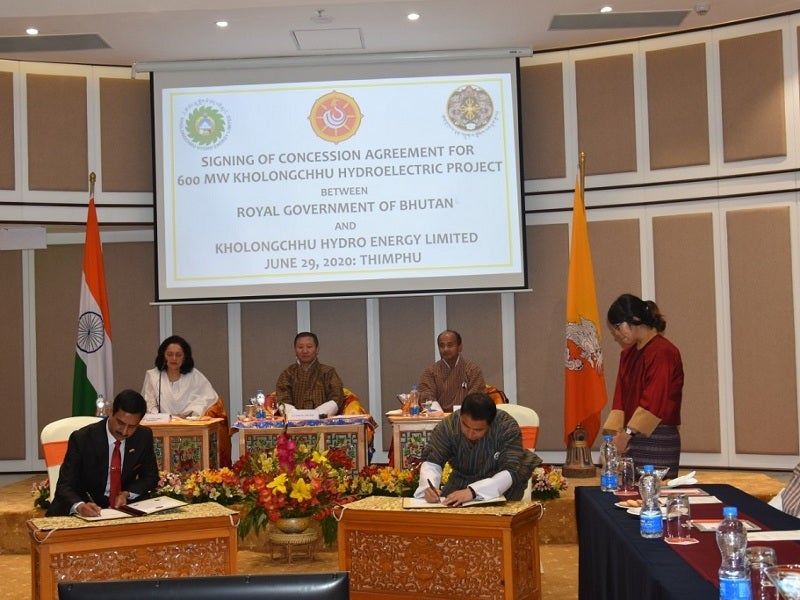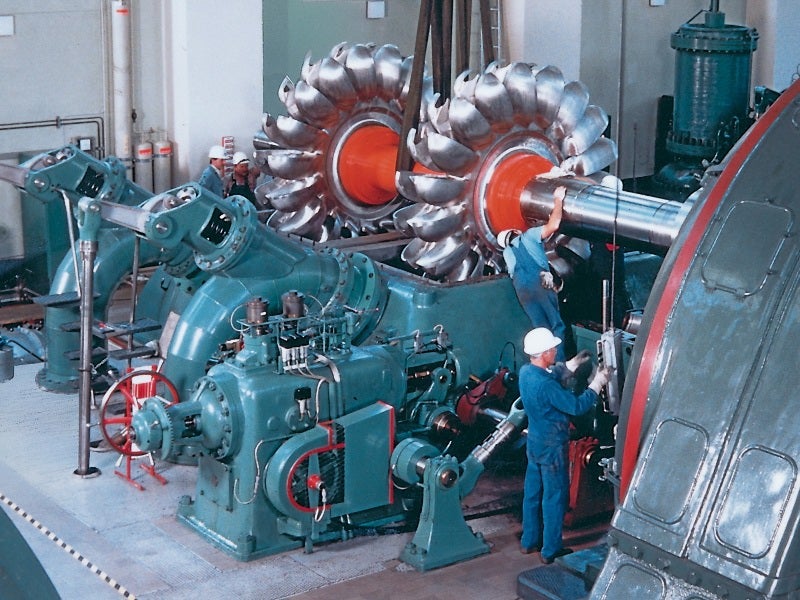The Kholongchhu hydroelectric project is a 600MW run-of-the-river hydropower facility under construction on the Kholongchhu River in Bhutan. It is the first ever energy project to be developed through a joint venture (JV) partnership between India and Bhutan.
An inter-governmental agreement was signed between the Government of India and the Royal Government of Bhutan in April 2014 to jointly develop the Kholongchhu project as well as three other hydroelectric power projects in Bhutan.
The Kholongchhu Hydro Energy (KHEL), a joint venture between Bhutan electricity utility company Druk Green Power Corporation (DGPC) and Indian firm Satluj Jal Vidyut Nigam Limited (SJVN), is implementing the Kholongchhu hydroelectric project.
Expected to be completed by the second half of 2025, the project will generate up to 2.5 billion million units of electricity annually.
Kholongchhu hydropower project background
The National Environment Commission (NEC) of Bhutan issued the environment clearance for the project in July 2014. The Kholongchhu Hydro Energy JV was registered in June 2015 to develop the project. The construction licence was obtained in July 2015 and the groundbreaking ceremony was held in September 2015.
The project has faced construction delays as a tariff determination for a long-term power purchasing agreement (PPA) for signing of the concession agreement (CA) could not be finalised between the two governments. The tariff setting was finalised and the CA was finally signed in June 2020, paving the way for resumption of the construction works.
The pre-construction works for the project were nearing completion as of July 2020, while the contracts for the main civil works including the construction of the dam, headrace tunnel and the powerhouse are yet to be announced.
According to the recently signed concession agreement, the JV will have ownership of the operation of the project for a period 30 years, after which it will then be transferred to the Royal Government of Bhutan (RGoB).
A royalty share of 12% of the saleable energy generated from the project will also be supplied free of cost to RGoB for the first 12 years of commercial operation of the project. The share will be further increased to 18% till the end of concession period.
Project location and make up
The Kholongchhu hydroelectric project is located on the lower course of the Kholongchhu River just before its confluence with the Drangmechu River in Trashiyangtse District of eastern Bhutan.
The project will feature a 95m-high concrete gravity dam measuring 165m in length and 6m in width. The dam will create a 1.4km long reservoir with 2.9 million cubic metres (MCM) of gross storage capacity.
A horse shoe shaped diversion tunnel measuring 372m x 10m will be built on the left bank of the river. The 15.77km-long and 5.7m-diamter headrace tunnel for the project will have a design discharge capacity of 89 cubic meters per second.
The facility will also house two 350m-long, 13m-wide and 17.5m-high desilting chambers, and a total of six spillway bays including five ogee spillway bays with sluice gates in the lower tier and one ogee bay with an open crest in the upper tier.
The underground powerhouse complex with two caverns will be built on the right bank of the Drangmechu River. It will be installed with four Pelton wheel turbine units each with a rated capacity of 150MW. The powerhouse will be connected through two 1,200m-long and 3.3m-diametre main pressure shafts bifurcated into four 187m-long and 2.35m-diameter branch pressure shafts.
The water from the power complex will be released through four 605m-long D-shaped tail race tunnel units merged into a 1,521m-long main tail race tunnel.
Power transmission
The electricity generated from the Kholongchhu hydroelectric project will be transmitted to the NEWNE grids of Bhutan and India via 400kV transmission lines.
Project financing
The project is estimated to cost £488.14 m (INR46.32bn), which is being financed under a debt equity ratio of 70:30. The Government of India is providing DGPC’s share of equity.





